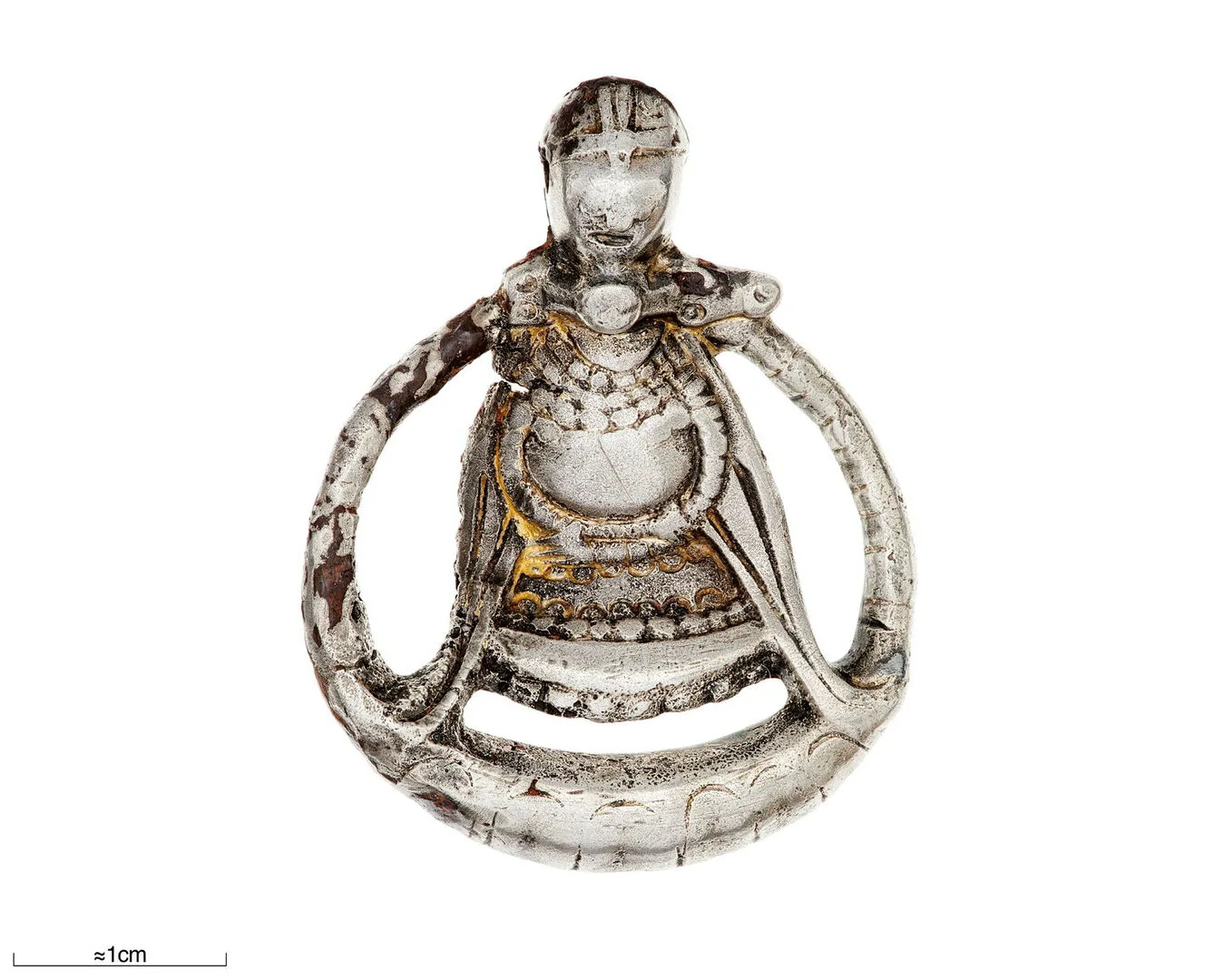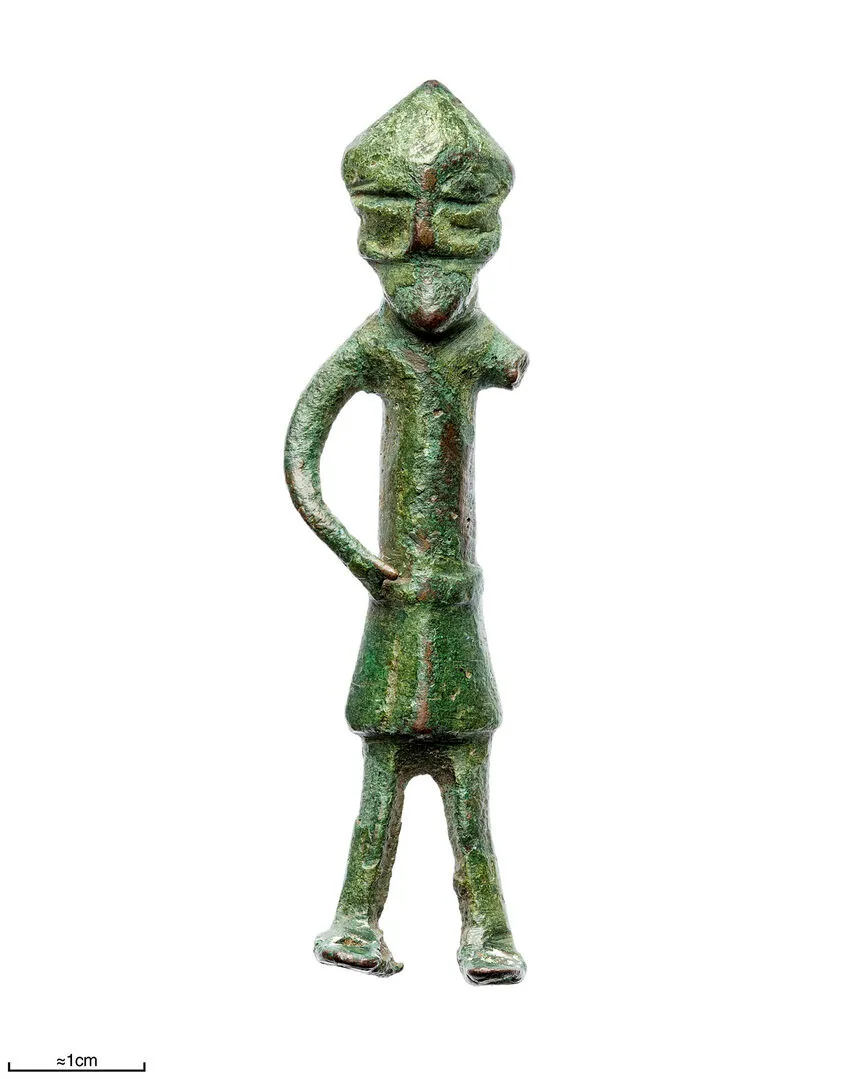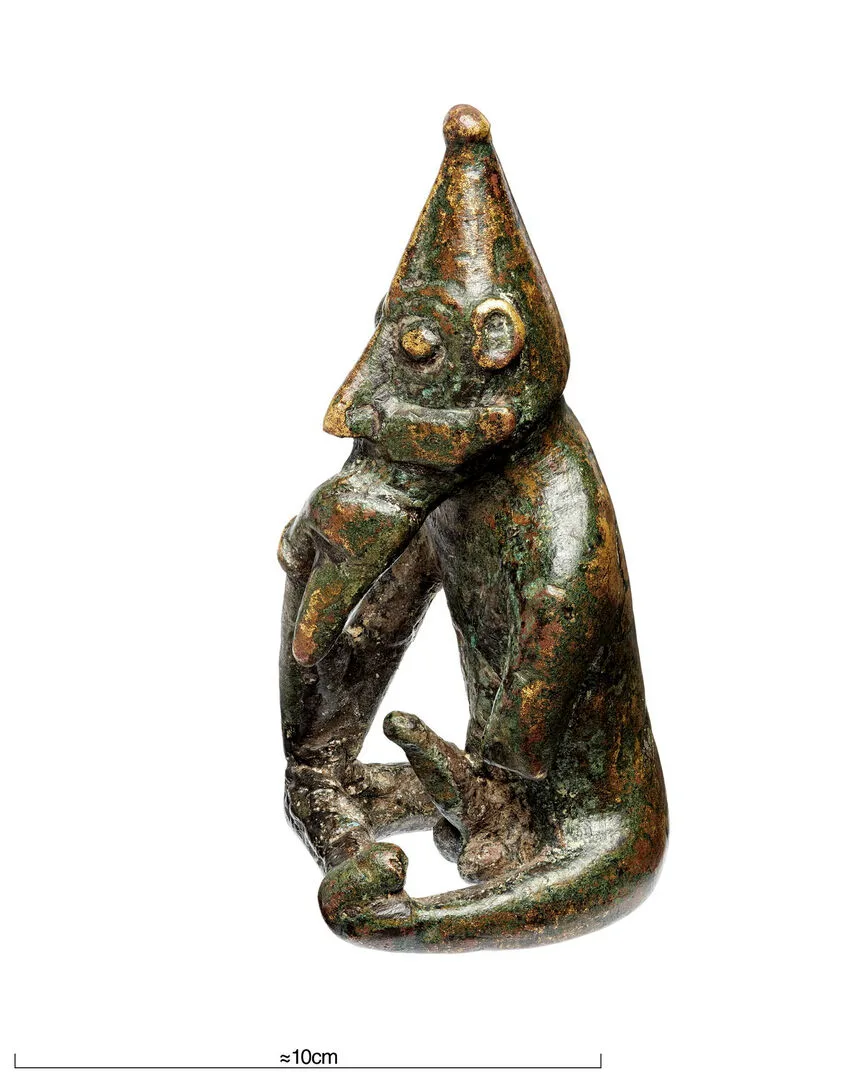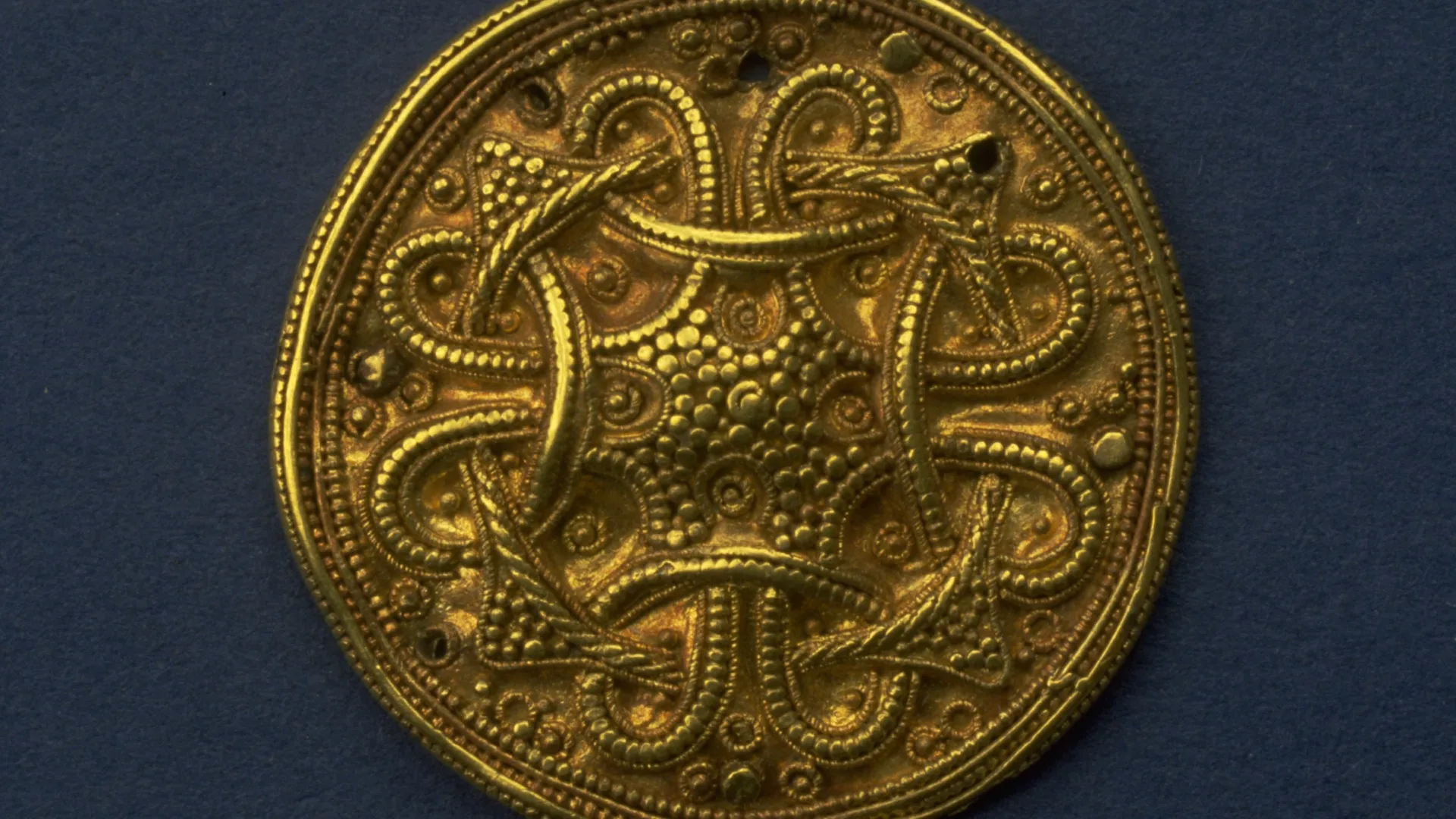Old Norse Myths and Sagas
Iron Age
500 BC – AD 1100
Viking Age
AD 800 – AD 1100
Middle Ages
AD 1050 – AD 1520
Viking Age customs and traditions were not part of any unified religion. Similar ceremonies and practices existed across much of Northern Europe before Christianity took hold. In Viking Age Norse religion there were many gods. There was also a rich treasury of myths and sagas telling who the gods were and what qualities they possessed. This entire tradition was oral, and so it had to be retold again and again.

Pendant
Silver pendant depicting Freyja. Aska, Östergötland.
The pre-Christian traditions had no written “holy book” in the way that larger religions have. The myths and sagas we know today were written down long after the Viking Age, mainly in Iceland during the twelfth and thirteenth centuries. But many gods and myths are depicted on Viking Age objects and on the picture stones of Gotland.
“The Enclosure in the Middle” – The Viking Worldview
Old Norse mythology tells that humans and gods lived in Midgard, meaning “the enclosure in the middle”. Midgard was, in the mythology, the ordered human world. Beyond Midgard lay unknown lands with monsters such as giants.
This worldview is easy to understand against the background of the Scandinavian settlement pattern. Here there were many small farming communities (Midgard), separated by large uninhabited areas, often deep forests.
The ideas of what the cosmos looked like thus had a direct link to how people experienced the world in their everyday lives. Somewhere in Midgard the gods had their dwellings, Asgard. Descriptions of Asgard resemble very much the estates of Viking Age aristocrats, in appearance and in function. Several archaeologists argue that the aristocratic residences and Asgard were in a sense reflections of one another. Here too, mythology and reality were almost the same thing.
Many Gods
The best-known gods are Odin, Thor, Frigg, Baldr, Heimdall, Gefjon, Idunn, Njord, Freyr and Freyja. Each of these had their own personality and stories connected with them.
The gods were of two kinds: the Æsir and the Vanir. The Vanir were powers of fertility, the most important being Njord, Freyr and Freyja. Beside Æsir and Vanir there were also other mythological beings.
The wise völvas knew the course of the whole world, from the beginning of time to its end. The Norns decided each person’s life and fate. The elves were bound to the cultivated land and to dead ancestors. The valkyries accompanied fallen warriors to the realm of the dead.
The disir were female deities connected with lordship. The dwarfs were skilled craftsmen who lived in the earth.

Figurine
Bronze figurine depicting Odin found at Lindby, Skåne.
On view at Historiska museet in the exhibition Guldrummet
Odin – The Prince
Odin was the mightiest of the gods. A strange prince, raised above good and evil. It was Odin and his brothers who, at the dawn of time, ordered the world and created the first humans, Ask and Embla. Odin was above all a god of the upper classes. He was worshipped by kings and other rulers, and their skalds sang his praise. Odin’s hall, Valhalla, seems to have been much like the aristocratic halls that archaeologists have excavated in recent years.
Odin was the god of wisdom. He sacrificed one of his eyes for wisdom, and he gained knowledge of the runes by hanging himself from the world tree Yggdrasil for nine days and nine nights. Odin’s wife was Frigg, mother of Baldr. Odin’s ravens, Huginn and Muninn, flew out over the world each day to gather knowledge. His eight-legged horse, Sleipnir, is often depicted on the Gotland picture stones.

Figurine
Bronze figurine depicting Freyr.
On view at Historiska museet in the exhibition Guldrummet
Thor, Heimdall and Freyr
Thor was also a powerful god, much beloved by both the aristocracy and the farming population. He was the world’s protector and fought against the giants with his hammer, Mjöllnir. Heimdall was a more enigmatic god, born of giantesses, who served as watchman at the end of the rainbow.
At the world’s end he would sound the warning of doomsday, Ragnarök. Freyr was a god who could grant wealth, health and fertility. He was the son of Njord and brother of Freyja, and is sometimes portrayed in small statuettes with a prominent phallus.
Practical Religion
Through rites and acts of worship, people could communicate with the gods and other powers. Religion was not so much about theoretical ideas, but rather its focus lay in practical actions. Rituals and cult were part of ordinary life at events such as funerals or the building of a house. In addition, regularly recurring cult feasts and sacrifice ceremonies were held.



